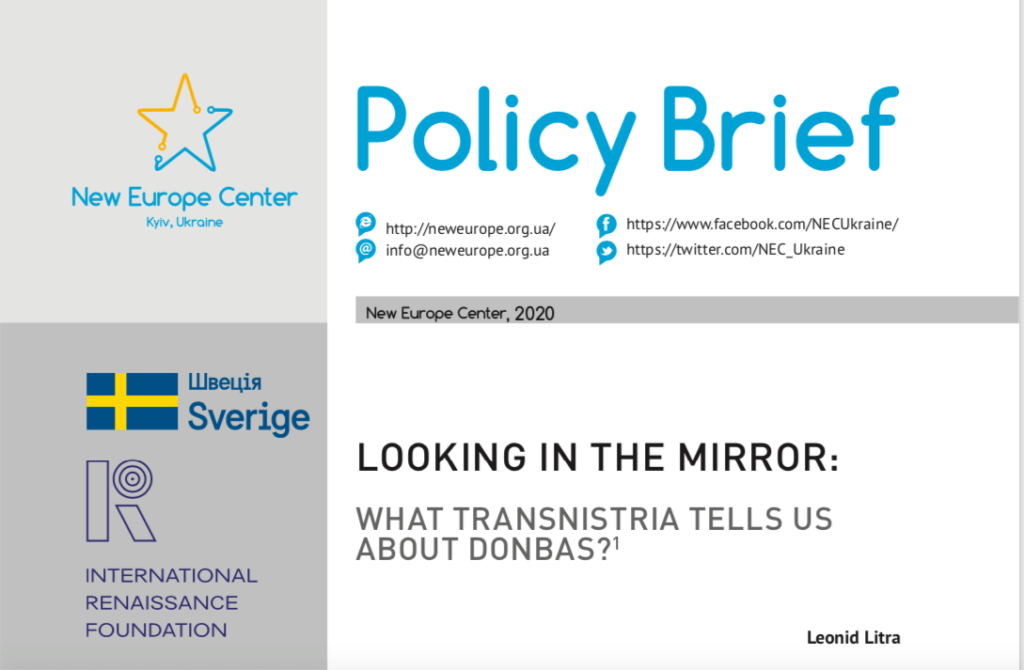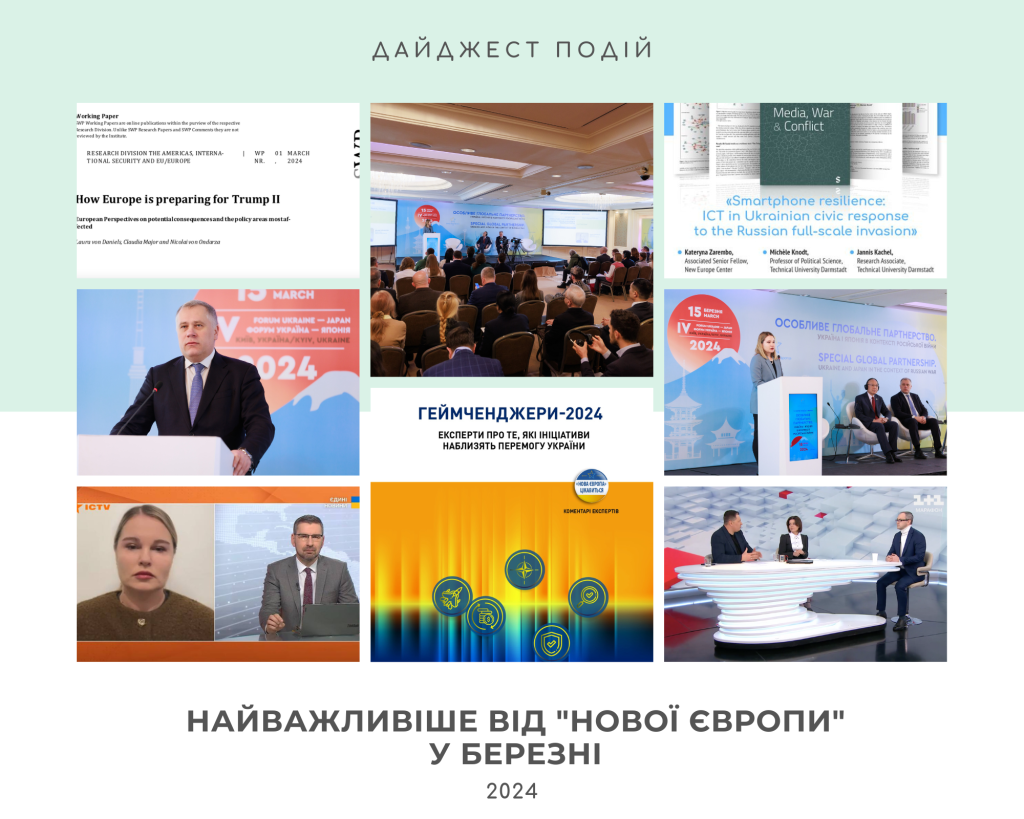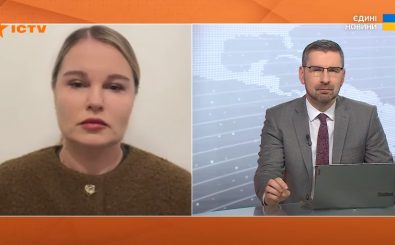Policy brief by Leo Litra, New Europe Center senior research fellow on Moldova’s experience in settling the Transnistrian conflict and how Ukraine can use it to resolve the Donbas conflict.
PDF-version of the document is available here.
The 2019 regime change in Moldova was widely unique. It is maybe for the first time when EU, Russia and the U.S. have endorsed the same plan for Moldova, although for different reasons. In Chisinau, experts say that before, nobody was able to unify the position of the three actors in Moldova – but oligarch Vlad Plahotniuc managed. However, the technical partnership between President Igor Dodon and Prime Minister Maia Sandu did not last. After few months of governance, the Sandu government was dismissed amid opposition from Igor Dodon to reform the law-enforcement agencies and judiciary and a new government was installed. The next important milestone for Moldova is the presidential elections scheduled for the fall of 2020 and possible early parliamentary elections. The role of the new government is seen as an actor meant to create the necessary conditions for Dodon’s reelection and ensure that his image is promoted at all levels. The president is not only looking to get reelected for the second term, but also to get a majority in the next parliament, which is improbable but possible.
The higher chances to win elections for Igor Dodon are expected due to the fact that he revisited his strategy on few important policies. First, he does not publicly oppose the Association Agreement with the EU, although he still pretends Moldova should be following the path towards Russian-led Eurasian Economic Union. Second, he publicly became less pro-Russian on Transnistria, accommodating a bigger part of the electorate who perceived him as pro-Russian. Third, Dodon has done a series of moves to ensure quick wins for him and his party, including by extending his political control over state institutions. All these activities indicate that Igor Dodon is preparing for presidential elections and possible early parliamentary elections. His own and his party (Socialist party) main objective is to win a majority in the next parliament or at least to maximize his current result (36 seats of out 101).
For Ukraine, the regime changes in Moldova and the evolution of the situation is a process to watch. The risk of an unfriendly Moldova exists and is widely represented by President Igor Dodon, who is rather a facilitator than the origin of the menace (Russia). That is why Ukraine should see its interest in Moldova as a continuation of its defense against Russia.
The main risks for Ukraine deriving from Moldova are associated with the federalization of the country and thus its “transnistrization”. However, Russia will not be able to broker a deal without the support of the West. US took the back seat while Germany’s position is increasingly weaker compared to the Russian influence. Despite this, a federalization could take place only upon the blessing of Berlin. That is why, the main priority for Ukraine in Moldova should be prevention of the federalization of Moldova which would set an example for region and thus turn the responsibility from Russia as an aggressor to the victim-states.
Ukraine and Moldova could do a lot together for limiting the Russian interference in the region. It could start from continuation of the joint control at the border, especially on the Transnistrian perimeter and embark into dismantling of shadow business related to smuggling. It could also concentrate on the weakening of the system by limiting all the illegal economic activities and rent-seeking schemes with the involvement of various “state”-owned companies in Transnistria. In this regard, the position of Moldova and Ukraine could differ from the one of EU. Brussels policy in the region is to create dependence on EU, even by sometimes disregarding illegal Transnistrian schemes.
Russia also learned several lessons from its previous attempts, notably from Kozak plan, meant to impose a solution to the settlement of Transnistrian conflict. First, Russia understood that the agreement on Transnistria should not be supported by a single party only (despite the majority), but by bipartisan or multi-party support – importantly, parties should not represent only the pro-Russian electorate. Second, it should not be seen as a Russian settlement plan but as a Russian-Western proposal and therefore the West should endorse the plan. Third, it has to resort to sophisticated models that do not involve terms such as federalization, but rather such as “special status”, etc. Operating such “corrections” to the Kremlin’s actions and narrative in Moldova is offering much better conditions for a successful covert attempt to get full control over Moldova.
Moldova is of interest for Ukraine for several reasons. First, Ukraine needs to make sure that it has a friendly state at its borders, especially given the difficult relations with many of its neighbours for various reasons. Second, Ukraine has the second largest border with Moldova (after Russia) of 1222 km of which 452 km are on the Transnistrian perimeter of the Ukraine-Moldova borer. Third, since 2014 Moldovans are the biggest nation by visitors to Ukraine accounting for about 4.5 million of border crossings in 2018. Fourth, according to the 2014 Moldovan census, Ukrainians are the biggest ethnic minority with 6.5% (181.035 people) of the population of Moldova – down from 8.38% (282.406 people) in 2004. Separately, in the Transnistrian region there were 126.700 ethnic Ukrainians (26.7%) in 2015 – down from 160.069 (28.82%) in 2004. Needless to say, Moldova represents a potential source of Russian pressure above all through the uncontrolled region of Transnistria and a potential unfriendly regime in Moldova.
Moldova is an interesting case for Kyiv also from a different perspective: Ukraine could cooperate with Moldova in order to defend its interests. But Ukraine could also put pressure on Russia, through Moldova. Kyiv should see its interests in Moldova above all as a continuation its fight against Russia, precisely because Kremlin sees Moldova and especially Transnistria as inter alia an instrument against Kyiv. And since 2014, the importance of this instrument increased significantly.
The instruments of Ukraine which it has in its possession are in the energy area (gas and electricity), control of exports of raw materials, fight against smuggling, joint border control, transport routes – including the railway and influence on diaspora and its citizens.
Before the Sandu-Dodon coalition took place, Vlad Plahotniuc had intensive negotiations with Igor Dodon over the potential alliance and Transnistria was one of the topics discussed. The negotiations and its partial content were proved by the hidden cam video which was released by Plahotniuc-controlled media after the coalition Sandu-Dodon was created. The intention of Plahotniuc was to discredit Dodon and create the necessary conditions for starting a prosecution during the existence of de-facto two governments. In the footage released, Igor Dodon claims that one of the conditions of the coalition agreement which should have not been made public was to federalize (special status) Moldova. According to Igor Dodon, the format was agreed with Russia and the signature of the agreement should have taken place at the Russian Embassy in the presence of the Ambassador. Second, Igor Dodon confessed that he is currently funded by Russia with USD 600.000-700.000 monthly. All these facts demonstrate what everyone knew but was not able to prove – Igor Dodon is Russia’s trojan horse managing and projecting Kremlin’s power in Moldova to the detriment of Moldovan interests.
The issue of Transnistria is maybe one of the top interests for Ukraine, given the security threats that it poses. The Russian sponsored region was created using the same formula as in Donbas. For almost thirty-years the positions of Transnistria have been defended and advanced by Russia. First, Russian tried insistently (and partially succeeded at the level of narrative) to change its role from aggressor and party in conflict to mediator, peacekeeper and guarantor of the settlement plan. In addition, Russia portrayed the conflict as an internal one which is meant to deprive itself for any responsibility for the aggression and blame Moldova for the existence of the conflict. For Ukraine, Transnistria should represent a top priority and Kyiv’s involvement in Moldova should be seen as a continuation of its fight against Russian aggression.
The Transnistrian region changed over the last 30 years. Above all, the region was depleted of population because of mass migration. If in 1990 the region was inhabited by 600.000 people, then today in half, amounting to less than 280.000 (officially 469.000 in 2018) or even less. The once industrial center of the country has lost many of its production and thus the “economy” of Transnistria became totally dependent on Russia and significantly decreased. For instance, in 1992 the GDP of the region was equal to 1/3 of the Moldovan GDP. In 2016, the GDP of Transnistria would equal to 14% of the Moldovan economy, despite the fact that Moldova itself showed very modest economic growth. Russia heavily invested in the region until 2014, but since the aggression in Ukraine, Kremlin has put the “Russian outpost” on diet. The funding is still tacking place, but mainly direct top-ups to the pensions in the region and by suppling gas free of charge which is counted by Russia as being the debt of Moldova (unlike Moldova who considers the debt belonging to Moldova Gaz). Before the crisis in Transnistria, the pensions and social allocations used to be few times higher than in Moldova – now these are equal or less. Therefore, Kremlin is losing its soft power in the region despite funding several social projects in the region meant to show the benefits of partnering with Russia.
The Russian playbook in the Transnistrian region should sound very familiar for a Ukrainian audience. Russia for many years pursued a policy of “passportization” and has accelerated issuing passports in the region in the detriment to Moldova’s protest and it claims it has now over 200.000 citizens. Despite the increasing financial burden, the issuing of Russian citizenship has given also practical results. Since Ukraine declared void the agreement on transit of equipment and personnel for Russian “peacekeepers”, the rotation of the troops has been increasingly difficult. Therefore, Russia has hired locals with Russian citizenship for serving in the peacekeeping mission and in the illegally residing Russian troops by de-facto organizing conscription on site. Kremlin also organized elections in the region for Russian parliament and president, which contradicts to the status of the mediator, which it claims it is. Additionally, since 2014 the Russian troops have carried out military exercise (in average 400 military exercises per year), involving not only the illegal residing Russian troops but also so-called Transnistrian troops and peacekeepers. Russia does everything to compromise its pretending role of a mediator and show its responsibility of the conflict. However, Moldova has been very shy in exposing Russian vulnerabilities and wrongdoings and it is very likely that it will continue its timid behavior given the leadership of Igor Dodon.
Despite the fact that the conflicts in Moldova, Ukraine and Georgia have the same origin, the Transnistrian conflict has a much less degree of aggression. There is a certain degree of freedom of movement for ordinary people – although they still need to pass so-called passport control of the region. Transnistrian companies are registered in Moldova and they do not pay taxes. These companies export goods to all over the world under the Moldovan flag and most of the exports go the EU countries, while Russia is very low as an export destination. The DCFTA is also applied in the region and the regulations of Moldova and EU are enforced. Citizens of Moldova living in the occupied region also enjoy the visa-free travel with EU. To sum up, EU’s policy in regarding the conflict was to create dependence of the region on Moldova and socialize with the Tiraspol administration and to some extent this aim was achieved. However, EU often convinced Chisinau to make unilateral concessions.
Instead, many Moldovan officials have interdiction to visit the territory of Transnistria and the region has enforced a de facto border with customs and border control, contrary to 1992 agreement between Moldova and Russia. OSCE has not inspected the region since over 10 years despite the fact that this is one of the main goals of their mandate. Moreover, OSCE has been the most disappointing partner in approaching the conflict since it acted against the mandate which it has been offered, especially in the last 5 years, when it put pressure on Moldovan authorities to make unilateral concessions.
Since the policy of “small steps” is implemented in Moldova, according to which Moldova and Transnistria would make steps toward each other and thus would gradually move towards a “special status” – a format of which Ukraine should be particularly worried about since in fact it means “federalization”, just that it is packed more elegantly and appears to be an inoffensive model.
The negotiation process is currently centered around the “small steps” policy which is officially designed to make simultaneous steps (progress) of Chisinau and Tiraspol on various disputes, but de facto turned into a process of gradual transfer of sovereign prerogatives from Chisinau to Tiraspol. The “small steps” policy and the negotiations process has been rightly challenged by the then PM Maia Sandu, in front of OSCE head and foreign Ambassadors, who questioned the rationale of the negotiations given that the leadership of Transnistrian region continue to declare their path to independence and re-uniting with Russia and therefore any efforts of Chisinau and external pressure on the government in Moldova is illogic since the declared objectives of Moldova and that of Transnistrian region are mutually exclusive.
President Igor Dodon became lately increasingly cautious regarding the Russian agenda on Transnistria, at least in his public statements and mainly due to electoral reasons. First, he mentioned that the issue of Transnistria will not become part of the agenda for another year – year and a half – which basically means until presidential elections. Second, he mentioned that currently the international context is not favorable for a settlement since this cannot be done without having an internal consensus and an external consensus. Third, Igor Dodon revisited even more his approach by claiming that the stakeholders involved should focus on (1) democratization of Transnistria, (2) free movement of people and goods though the territory of Transnistria, and (3) the re-establishment of a single economic space within entire Moldova. Dodon’s statements are indicating a possible change of strategy after he is no longer Plahotniuc’s junior partner. Above all, Igor Dodon prefers stability over risks – he is currently playing the most important role in the country and therefore he does not want to give reasons to questions his power. In continuation of his stability-prone policy, Dodon is willing to get re-elected as president in 2020 and to get most of the votes and even get majority in the next parliament. For that, Dodon shall reinvent his image in such a way that is not labeled as only a pro-Russian politician but as an actor defending the interests of the majority – only in this way he could pretend to get the majority. Finally, demanding “federalization” while in opposition is way easier than being part of the ruling collation. At the same time, “federalization” does have a group of supporters in Moldova but he realizes that this is not an election-winning issue.
It is important to note that according to Moldovan legislation, Transnistria has already a “special status”. The law, which provides for basic principles of resolving the conflict and for parameters of a special legal status for Transnistria, was unanimously adopted in July 2005 by the Moldovan parliament. It offers a clear understanding or “red lines” from the side of Moldova but also offers a model for reintegration of the region – having a regional parliament, flag and three languages; integration of the judiciary and security into a single system of Moldova and the other competences of the region are separately negotiated once the process is in full swing.
This publication is a part of the Think Tank Development Initiative for Ukraine, implemented by the International Renaissance Foundation in partnership with the Open Society Initiative for Europe (OSIFE) with the financial support of the Embassy of Sweden in Ukraine.
The views and opinions expressed in this publication are those of the authors and do not necessarily reflect those of the Embassy of Sweden in Ukraine, the International Renaissance Foundation and the Open Society Initiative for Europe (OSIFE).








